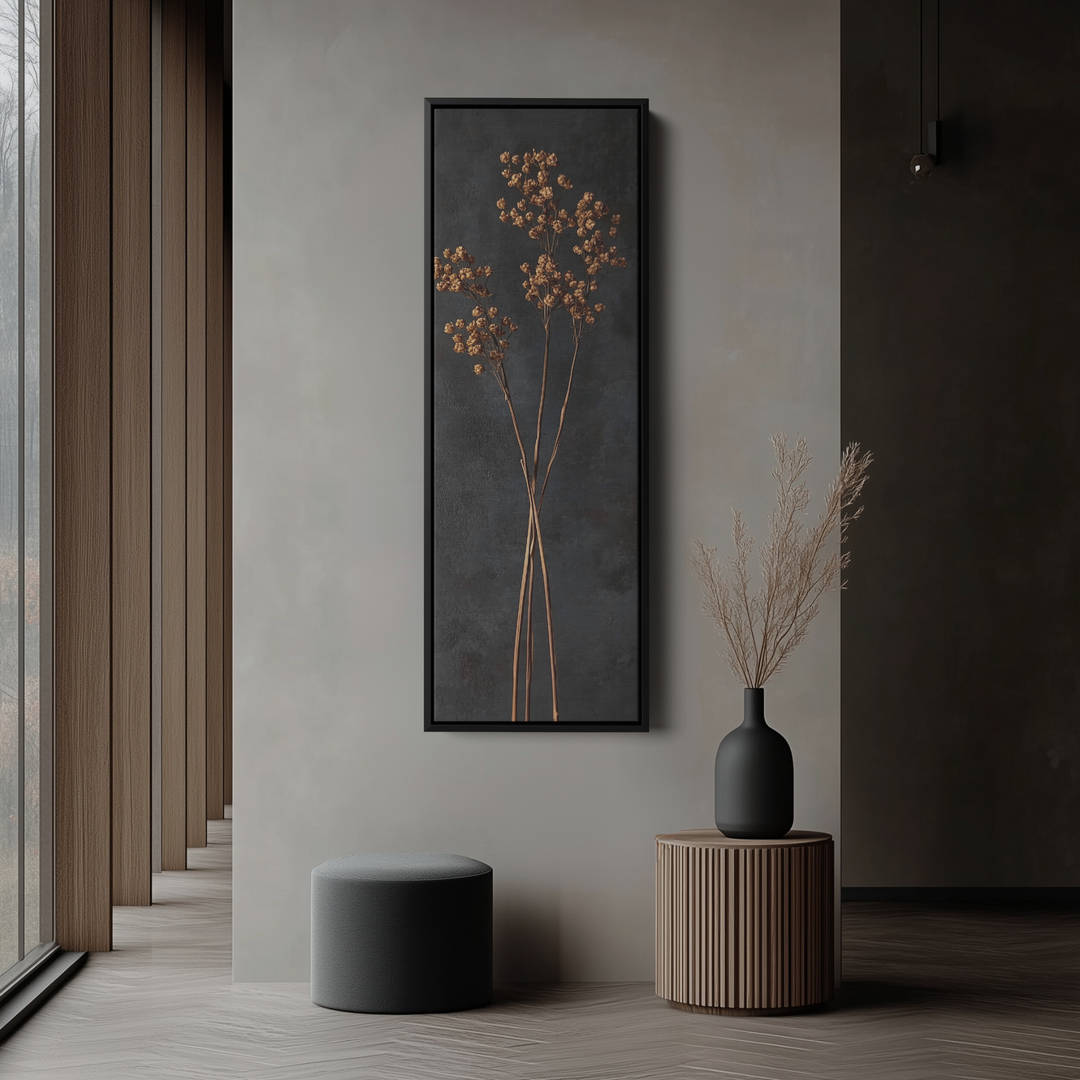Your home is full of character — even the quirky parts. That sliver of wall beside the staircase, the narrow corridor between rooms, or the awkward space above a radiator: these spaces might feel tricky, but they’re also full of potential. The right piece of wall art can turn them from after-thoughts into anchors of design.
Here’s a guide to styling those awkward, narrow walls with art that transforms the space.
1. Embrace the vertical format
When a wall is narrow but tall, the natural instinct is to go wide and dramatic. But actually: lean in to the height. A tall, vertical print draws the eye upwards and makes the space feel purposeful.-
Choose a print with a strong vertical orientation — maybe a slender botanical, a single-stem floral, or an architectural line.
-
Position the print so that it dominates the height of the wall without feeling cramped.
-
The effect: instead of the wall feeling like an awkward gap, it becomes a deliberate design decision that gives the area personality.
2. Use a slender horizontal canvas wisely
Sometimes the narrow wall is wide but shallow: a long, skinny stretch above a sofa, bench, radiator or console. In that case, a horizontal format can be the perfect solution.
-
A panoramic print or wide canvas pulls the space together, making the area feel expansive rather than constrained.
-
Go with soothing imagery or minimal abstractions so the length is felt but the scene isn’t busy — simplicity keeps the space from feeling too cluttered.
-
Placement tip: centre the artwork, and if possible keep it at eye level or just above the piece of furniture it sits above.
3. Make bold or minimal choices to match the space
Awkward spaces often need confidence. Whether you go bold or pared-back depends on your style and the scale of the wall, but either way, the print should play intentionally.
-
Bold statement: Let the art be the focus. High contrast, strong colour palette, and dynamic subject matter can turn the space into a story.
-
Minimal harmony: If the surrounding décor is busy, opt for a calm print — soft tones, minimalist lines or natural subjects.
4. Align with furniture and architectural features
Often narrow walls sit above, beside or between furniture or architectural features. Rather than ignoring or fighting that relationship, use it.
-
Match the width of the art to the piece below (bench, console or radiator) to create a strong visual connection.
-
If beside a staircase, a vertical print can mirror the ascent of the stairs and avoid visual conflict.
- If above a radiator or low console, a horizontal strip just above it can create a cohesive design band rather than floating awkwardly.
5. Choose the right scale and frame
Scale matters. Too small and the art disappears; too big and it overwhelms. For narrow walls especially, you want precise proportions.
-
For vertical narrow walls: aim for a height roughly two-thirds of the wall height if not anchored by furniture.
-
For horizontal skinny walls: span the art nearly the full width of the furniture piece or feature beneath it.
6. Make the most of colour and lighting
Even when the wall is narrow, colour and light give it presence.
-
Choose prints whose dominant hues either echo or contrast with nearby décor — e.g., if the surrounding walls are soft grey, a hint of rich green will lift the space.
-
Lighting helps: a narrow wall can feel tucked away or dim. If possible, add a wall sconce, picture light or track lighting to highlight the artwork.
-
Don’t worry if the wall isn’t a prime location — the right print + light combo makes even a tucked-away space feel intentional and considered.
Awkward doesn’t mean unusable. By choosing the right orientation, scale, and style of wall art, you can turn narrow walls from forgotten spaces to featured displays.
Ready to transform that narrow wall? Explore our vertical and horizontal wall art collections and find the piece that fits your space.














